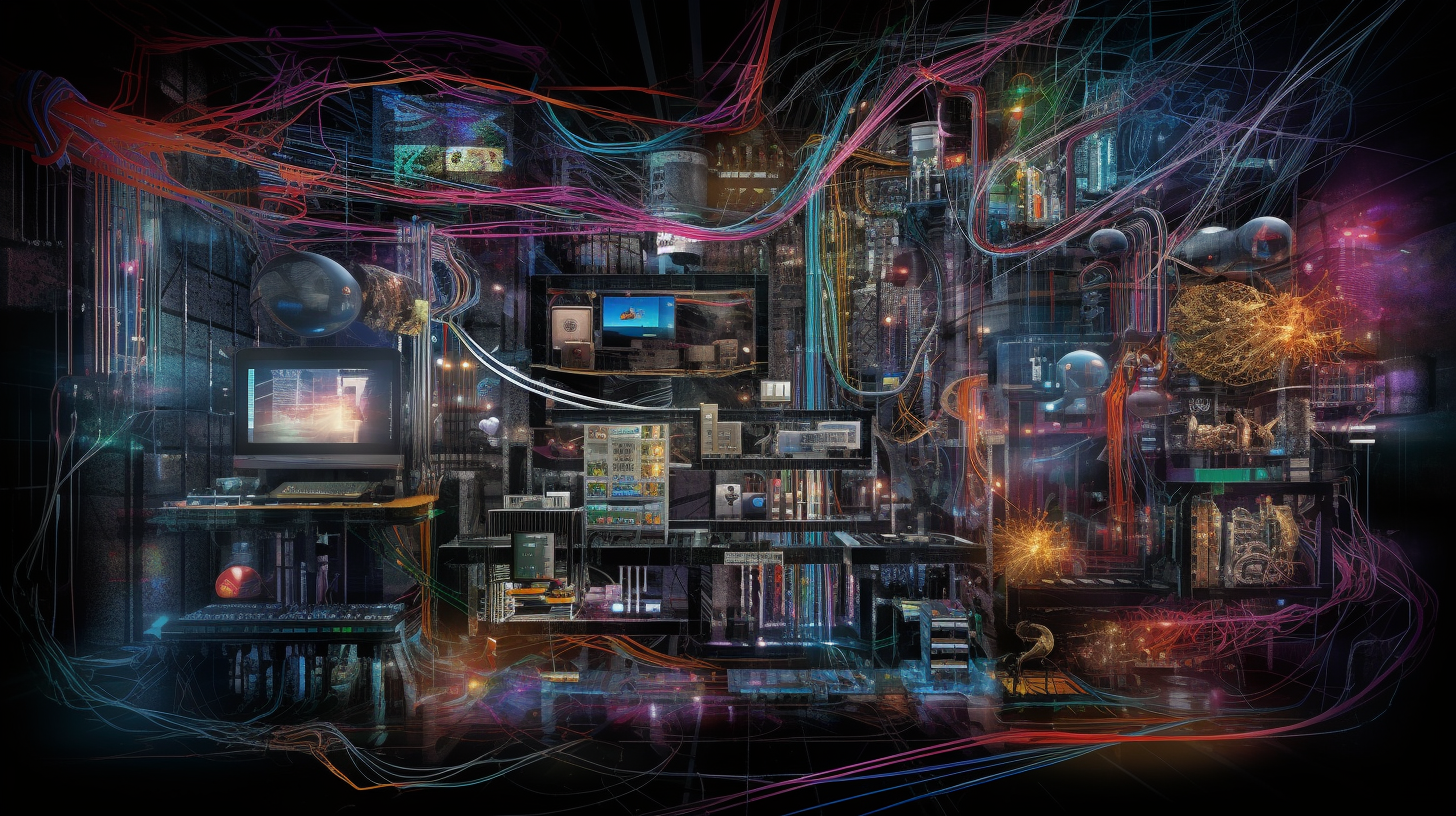Understanding the Intricate Web of LAN Architecture

Hello, networking enthusiasts! Preparing for the CCNA 200-301 exam? Don't forget about the significance of LAN Architecture—a topic as essential as it is intriguing. Join me as we explore the captivating universe of Local Area Networks, where every cable, switch, and protocol plays a vital role in our digital connectivity.
So, What Is LAN Architecture?
To start off, what do we mean by LAN Architecture? Think of it as the foundation or blueprint of a local area network. But it’s not all about cables and switches! Imagine it as a beautifully orchestrated symphony, where each component must harmonize. From the physical arrangement of your network cables to the logical structure determining how data packets flow, LAN Architecture provides the essential strategy for crafting a network that’s both effective and adaptable.
The Core: Physical and Logical Topologies
Delving into Physical Topologies
Let’s examine the tangible aspects of LAN Architecture. This part focuses on how devices connect physically with cables and hardware. Common physical topologies include:
- Bus Topology: An old classic where all devices connect to a single backbone cable, much like a series of fairy lights. It’s straightforward to set up, but if that one cable goes down, the whole network can be affected—yikes!
- Star Topology: The superstar of topologies! Here, every device connects to a central hub or switch, forming a star shape. It's reliable and easy to manage; losing one cable won't take down the entire network.
- Ring Topology: In this configuration, each device connects in a circular manner with its neighbors. It's like a never-ending circle game, but if one connection falters, the game is halted.
- Mesh Topology: The pinnacle of reliability! Here, every device connects to multiple neighbors, creating various pathways for data. This means your network stays active even if one route fails.
Now, Let's Explore Logical Topologies
Next up, let’s discuss logical topologies. This area focuses less on cables or plugs; it’s about the logic of how data traverses the network. Logical topologies may mirror their physical counterparts but prioritize how the network operates.
Switching: The Real Fun Begins
If you thought routers were the only stars in this realm, think again! Switching, a crucial element of LAN Architecture, creates the swift pathways throughout the network maze.
Layer 2 vs. Layer 3 Switching
Understanding these layers is vital. Layer 2 switches utilize MAC addresses to forward data frames—imagine them as the sorting hat from Harry Potter categorizing students. Layer 3 switches route packets based on IP addresses, akin to a GPS guiding you through winding roads to reach your destination.
VLANs: Your Network's Distinct Identities
Introducing Virtual LANs, or VLANs; they allow you to segment your network, establishing multiple broadcast domains on a single physical network. It’s like having a magical space that lets several groups co-exist harmoniously within one network, leading to less clutter and improved security.
The Role of Protocols
In the world of LAN Architecture, protocols are the unsung heroes that facilitate communication between devices. Let’s check out a few protocols you should know.
Ethernet: This protocol changed the networking landscape. Acting as a universal network language, Ethernet specifies how data packets are formatted, ensuring all devices play by the same regulations.
Spanning Tree Protocol (STP): Where would we be without STP's role in preventing loops that can cause a network meltdown? It’s the silent guardian that keeps everything running smoothly.
Link Aggregation Control Protocol (LACP): Imagine merging several roads into an expanded highway. LACP does just that, bundling multiple network links to boost bandwidth and improve redundancy.
Ensuring Security in LAN Architecture
Security, the often-ignored aspect, also requires our attention! Securing LANs isn't solely about data protection; it’s also about stopping malicious intrusions.
Port Security: Like vigilant bouncers at a club, port security supervises who gets access and blocks unwanted guests.
Access Control Lists (ACLs): These function as the ultimate gatekeepers, determining which packets can pass through and which ones hit a dead end. They’re your first defensive line against unauthorized access.
Network Access Control (NAC): By enforcing compliance with policies and assessing device adherence, NAC maintains a secure and healthy network, ensuring only the invited can join in.
The Necessity of Redundancy
Networks devoid of redundancy are like trapeze artists working without safety nets—one slip could lead to chaos. Implementing redundancy throughout LAN Architecture assures that a single failure won’t bring everything crashing down.
Utilizing protocols like Hot Standby Router Protocol (HSRP) and Virtual Router Redundancy Protocol (VRRP) adds layers of redundancy, guaranteeing services remain uninterrupted even if individual components fail. Think of them as your backup singers, always ready to step in when needed.
Scaling your Network
As our world evolves, the ability to scale networks becomes increasingly vital. With a growing number of devices, having an adaptable LAN Architecture is essential. Implementing scalable solutions—like hierarchical networks with core, distribution, and access layers—ensures your network stays as agile as possible.
The hierarchical design enhances performance management, simplifies troubleshooting, and paves the way for future expansion, allowing your network to grow along with technology seamlessly.
The Cloud Aspect
Integrating cloud technology into LAN Architecture adds a level of versatility that traditional setups lack. This hybrid approach fosters a vibrant environment, merging conventional LANs with the scalability and flexibility of cloud resources. It’s akin to tossing a magic carpet into your infrastructure, granting your network the ability to soar as required.
To Conclude
As we wrap up, it’s evident that the complex design of LAN Architecture grants our networks the ability to effectively manage, secure, and transmit data. The manner in which every element—from topologies to switches, protocols, and security measures—fits together dictates whether your network can meet modern demands or needs a little refinement.
So, as you prepare for that CCNA 200-301 exam, keep in mind: mastering LAN Architecture is like mastering the fine art of networking. Embrace the journey as you explore the intricate beauty that shapes our connections!